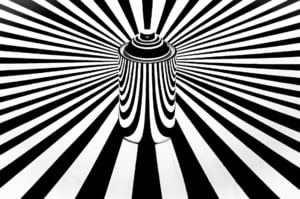Popular culture has its uses, such as keeping us entertained. Often, however, it does not provide the most accurate information if that’s what you’re looking for. Obsessive-Compulsive Disorder (OCD) is one of those terms that have made it into the popular lexicon through movies and TV shows, but there is widespread misunderstanding about the signs of OCD and what it is and isn’t.
 Some people are meticulous – they arrange their sock and underwear drawer just so, wash their hands frequently, and live their life by the clock or carefully drawn-up schedules. Such people are often told they have OCD, but this isn’t entirely correct.
Some people are meticulous – they arrange their sock and underwear drawer just so, wash their hands frequently, and live their life by the clock or carefully drawn-up schedules. Such people are often told they have OCD, but this isn’t entirely correct.
While they look like they have signs of OCD, actually having OCD is another thing altogether. Christian Counselors emphasize that, understanding the difference is important, if only because diagnosing conditions accurately matters so that the right approach or remedy can be pursued.
If being meticulous and methodical don’t necessarily amount to OCD, what is OCD, and what are its symptoms?
What is Obsessive-Compulsive Disorder?
OCD has two main elements: obsessions and compulsions.
Obsessions.
First, a person with OCD will often have fears, impulses, unwanted/intrusive thoughts, or images that occupy their mind, over which they have no control. It’s no use telling them simply to stop because it’s something they don’t control. Ignoring or trying to stop these obsessions causes significant distress and anxiety.
The types of obsessions (repetitive impulses, intrusive thoughts, and images) that they deal with may involve fear of contamination (germs), sexual images, fear of shouting obscenities and acting inappropriately in public, or they may be related to perfection and symmetry. These often generate inordinate amounts of anxiety. Can you imagine experiencing thoughts and impulses you can’t simply shove aside when you feel like it?
Compulsions.
The second component of OCD is that in response to their fears and anxieties, a person will have compulsive behaviors that they engage in to relieve the anxiety these obsessions cause. The type of compulsive behaviors they engage in will vary.
 People with obsessions involving fear of contamination will compulsively clean or wash their hands. Those with obsessions over symmetry and perfectionism will compulsively redo or organize things. Other compulsions center around counting, checking, following a strict routine, and orderliness.
People with obsessions involving fear of contamination will compulsively clean or wash their hands. Those with obsessions over symmetry and perfectionism will compulsively redo or organize things. Other compulsions center around counting, checking, following a strict routine, and orderliness.
If one has a compulsion to check, it may look like checking the stove or your lights repeatedly to make sure they are off or checking your doors and windows repeatedly to make sure they’re closed and locked. Engaging in these compulsive behaviors only offers temporary relief from anxiety and fear, and the obsessive thoughts will return unbidden, and the cycle will start again.
People with OCD have little to no control over their obsessive thoughts and compulsive behaviors. Because they have no control over them, these can have dramatic and negative effects on that person’s life, consuming valuable time and causing significant distress. Having obsessions and compulsions you cannot control can be agonizing because you may know that what you’re doing is irrational, but you find yourself unable to stop.
What are the signs of OCD?
Obsessive thoughts and compulsive behaviors that are associated with OCD generally last more than an hour each day and tend to interfere with aspects of everyday life like work, school, or relationships. The types of compulsions and obsessions you experience may change throughout your life, and the symptoms of these obsessions and compulsions can become more severe when you’re under stress.
Possible signs of obsessions include:
- Unpleasant or distressing sexual images.
- Doubts whether you’ve locked your door, closed your windows, or turned the stove and other kitchen appliances off.
- Fear of being contaminated by touching objects others have touched, such as doorknobs, cups, or pens.
- Thoughts about shouting obscenities or acting inappropriately in public.
- Intense stress when things aren’t organized in an orderly way or facing a certain direction.
- Avoiding situations that could trigger your obsessions, such as shaking hands or giving people hugs.
- Being plagued by excessive doubt or fear of making a mistake.
- Images of driving your car straight into a crowd of people.
Compulsions are repetitive behaviors that a person feels driven to perform to reduce the anxiety that stems from their obsessions. These behaviors aren’t necessarily rational, in that they often aren’t related to the problem they try to remedy.
Signs and symptoms of compulsions can include the following:
- Checking the stove or other appliances repeatedly to make sure that they are turned off.
- Washing your hands until your skin becomes severely chapped or raw.
- Saying or doing things a specific number of times in a certain way before being able to leave the house.
- Checking your doors or windows repeatedly to make sure they’re closed or locked.
- Arranging your clothes, canned goods, or other products to all face the same way, or eating your food in a specific order.
- Needing constant encouragement or reassurance from others that what you’re doing is right or okay.
- Saying numbers in certain patterns out loud or to yourself.
- Silently repeating a prayer, phrase, or word.
Causes of OCD.
 It is not known precisely what causes OCD. It is thought to be a neurobiological disorder, in that the brain is hardwired to behave in a certain way. OCD is associated with low levels of serotonin, a neurotransmitter that helps to regulate vital processes such as mood. Certain parts of the brain may also not respond normally to serotonin, and the areas of the brain that can be affected are the same areas that affect social behavior, complex cognitive planning and voluntary movement, and emotional and motivational responses.
It is not known precisely what causes OCD. It is thought to be a neurobiological disorder, in that the brain is hardwired to behave in a certain way. OCD is associated with low levels of serotonin, a neurotransmitter that helps to regulate vital processes such as mood. Certain parts of the brain may also not respond normally to serotonin, and the areas of the brain that can be affected are the same areas that affect social behavior, complex cognitive planning and voluntary movement, and emotional and motivational responses.
There may be a genetic component to developing signs of OCD as well – if another family member such as a parent or sibling has a history of other mental illnesses like depression, anxiety, or OCD, there is a greater chance of a person developing OCD. OCD may also stem from learned behavior and can be triggered through a stressful life event such as the death of a loved one.
Treatment for signs of OCD.
To get a proper diagnosis for signs of OCD, you need to see a mental health professional who will perform the right tests to make the determination. The process may include a physical exam to eliminate any other potential causes of your symptoms such as another health condition; blood tests to check how well your thyroid works and your blood count; and a psychological evaluation to talk through and assess your feelings, fears, obsessions, and compulsions.
If you are diagnosed with OCD, there are treatment options available. Treatment will usually involve a combination of talk therapy and medication to be effective.
Talk therapy with a psychiatrist or other mental health professional can help by providing you with the tools you need to become more aware of your thoughts and behavior patterns and allow you to make the necessary changes that will help you bring your obsessions and compulsions under control.
 Specific therapeutic techniques such as Cognitive Behavioral Therapy (CBT) and exposure therapy are effective for many people. These and other therapies can help someone by gradually desensitizing them from their sources of anxiety.
Specific therapeutic techniques such as Cognitive Behavioral Therapy (CBT) and exposure therapy are effective for many people. These and other therapies can help someone by gradually desensitizing them from their sources of anxiety.
Another highly effective therapy is Exposure and Response Prevention (ERP), which is geared toward helping a person with signs of OCD tolerate their distress and deal with the anxiety associated with obsessive thoughts in ways other than engaging in compulsive behavior.
Selective Serotonin Reuptake Inhibitors (SSRIs) are the medication that is typically prescribed for OCD. They increase the levels of serotonin in the brain by limiting its re-absorption. SSRIs and talk therapy are first-line therapies.
That means a Mental Health Christian Counselor will use these first. If these therapies do not work effectively, Electro-Convulsive Therapy (ECT) or surgery (bilateral cingulotomy – a type of brain surgery) may be alternative treatments if the OCD doesn’t respond to other less invasive treatments. ECT and surgery are considered a last resort for people with severe OCD.
“Toys”, Courtesy of Nick Fewings, Unsplash.com, CC0 License; “The Rocks Below”, Courtesy of Milo Bak, Unsplash.com, CC0 License; “Optical Illusion”, Courtesy of BP Miller, Unsplash.com, CC0 License; “Shoe Rack”, Courtesy of Alev Takil, Unsplash.com, CC0 License


